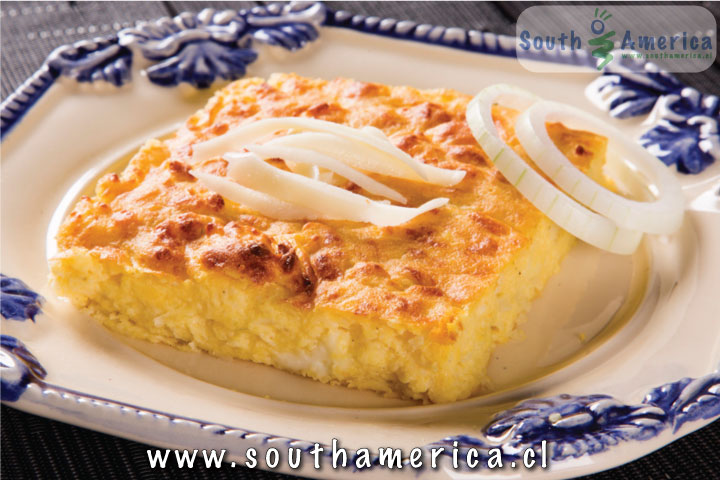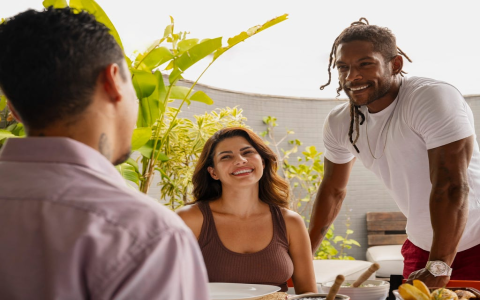So, I’ve been on a bit of a culinary adventure lately, right here in my own kitchen, and I decided to dive headfirst into Paraguayan food. It wasn’t something I knew a whole lot about, to be honest. I think I saw a travel show snippet once, and it just stuck in my head. Figured, why not give it a go?

My First Attempt: The Famous Sopa Paraguaya
The first thing I looked up was Sopa Paraguaya. Now, the name itself threw me off. “Sopa” means soup, right? So, I was expecting some kind of brothy concoction. I even started mentally checking if I had enough stock cubes. Boy, was I wrong. I pulled up a few recipes, and there it was – pictures of something that looked like a thick, golden cornbread. No liquid in sight!
I got all the ingredients: corn flour (the fine kind, not coarse cornmeal), a good amount of cheese (I used a mix of what I could find, aiming for something like Paraguayan cheese), onions, milk, eggs, and some fat. The process was pretty straightforward. Sautéed the onions, mixed everything into a batter, and then baked it. My whole place started smelling amazing. When it came out of the oven, it was this dense, moist, cheesy, oniony bread. Definitely not soup, but absolutely delicious. I ate like three pieces straight away.
Next Up: Chipa and Mbejú
After the Sopa Paraguaya success, I was feeling pretty confident. So, I decided to tackle Chipa. These are like little cheese bread rolls, super popular over there, especially for breakfast or as a snack. The key ingredient here is manioc starch, also known as cassava or yuca starch. Plus more cheese, eggs, and often anise seeds, which give it a really distinct, slightly sweet aroma.
Making them was a bit messy, the dough is kind of sticky. But rolling them into their traditional crescent or ring shapes was fun. They bake up pretty quickly and are best eaten warm. Chewy, cheesy, just really satisfying.
Then there’s Mbejú. It’s kind of similar to Chipa in that it uses manioc starch and cheese, but it’s cooked differently. It’s more like a flat, savory pancake or a griddle cake. You mix the starch, cheese, a bit of milk or cream, and salt, then cook it in a pan until it’s crispy on the outside and gooey inside. It’s simpler than Chipa, I think, and really quick to whip up.

You know, finding good quality manioc starch wasn’t too hard, most Latin American stores have it. But trying to get authentic Paraguayan cheese, that was a whole other story. I went to this one shop, and the owner, super nice guy, started telling me how his aunt in Paraguay makes the best Mbejú and how the store-bought cheese here just isn’t the same. He went on for a good ten minutes about the specific cow breed and the traditional way of making the cheese. It was funny, almost made me want to book a flight just to try his aunt’s Mbejú. It reminded me of when I was trying to learn to make proper Italian pasta, and my friend’s nonna basically said if I wasn’t using eggs laid by chickens that only listened to opera, I was wasting my time. Some things, you just gotta accept you’ll get a good home version, not the real-deal-holyfield original, you know?
Can’t Forget Tereré!
Okay, so this isn’t food, but you can’t talk about Paraguay without mentioning Tereré. It’s their national drink. It’s basically yerba mate, but served ice cold, often with different herbs (they call them ‘yuyos’) mixed in for flavor or medicinal properties. I got myself a ‘guampa’ (the cup, often made from horn) and a ‘bombilla’ (the metal straw with a filter). Making it was an experience. Crushing the herbs, mixing them with the cold water, sipping it on a warm afternoon. It’s incredibly refreshing. Definitely a different vibe from the hot mate I’ve tried before.
Other Notable Mentions: Asado and Empanadas
Paraguay, like its neighbors, loves its Asado (barbecue). Lots of beef, slow-cooked over coals. I didn’t attempt a full-blown Asado in my backyard because, well, that’s a whole event, not just a meal. But I did grill up some nice steaks with a simple salt seasoning, trying to channel that spirit.
And Empanadas! Of course. But the ones that really stood out to me were the ‘Empanadas de Mandioca’. These are made with a cassava dough instead of wheat flour. The texture is different, a bit chewier, and they are usually filled with beef. Really, really good.
My Takeaway from This Paraguayan Food Journey
So, what did I find out? Paraguayan food is hearty. It’s comforting. It relies heavily on a few core ingredients: corn, manioc (cassava/yuca), and cheese. Lots of cheese! It’s not overly complicated or spicy, from what I’ve experienced. It’s more about simple, satisfying flavors. It’s the kind of food that feels like it’s made with a lot of love and tradition. I’m glad I took the plunge. That Sopa Paraguaya is definitely going into my regular rotation. Give it a try if you haven’t; it’s surprisingly easy and super tasty.










